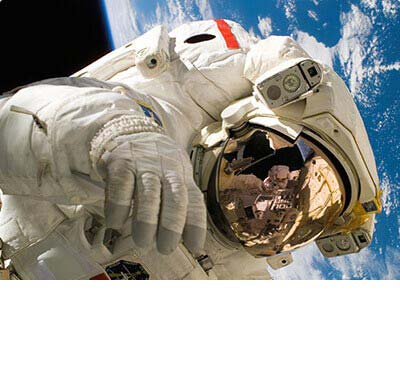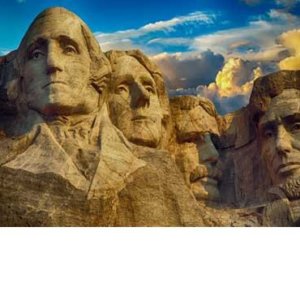- 0.1 Describe Lincoln’s plan to restore the Union and the tenets of Radical Republicanism, and analyze the success or failure of the Thirteenth Amendment.
- 0.2 Describe the efforts made by Congress in 1865 and 1866 to bring to life its vision of Reconstruction, and explain how the Fourteenth Amendment transformed the Constitution.
- 0.3 Explain the purpose and implementation of the second phase of Reconstruction, describe the impeachment of President Johnson, and analyze the benefits and drawbacks of the Fifteenth Amendment.
- 0.4 Explain the reasons for the collapse of Reconstruction, and describe the efforts of white southern “redeemers” to roll back the gains of Reconstruction.


Built from OpenStax’s US History
US History II
In this course, students will trace the history of the United States, beginning with westward expansion in the 1840s and advancing through events and challenges of the 21st century. They gain an understanding of industrialization and the rise of big business, urbanization, the progressive movement, the age of empire, and World War I. Students will analyze causes and effects of the Great Depression, the New Deal, World War II, and the Cold War, as well as examine the social and cultural movements and armed conflicts abroad that characterized the 1960s. Trends, events, and politics of the late 20th and early 21st centuries also will be explored. With a host of student supports like auto-graded practice quizzes, video examples, and in-class and home activities, students critically think about primary source documents, engage in dialogues about complex sociocultural historical issues, and reflect on how and why the United States developed in the way that it did.
Learning Objectives/
- 1.1 Analyze the evolution of American views about westward migration in the mid-nineteenth century and the ways the federal government facilitated that migration.
- 1.2 Describe the experiences of farmers and the challenges of women who migrated westward and settled west of the Mississippi River.
- 1.3 Describe the developments in western gold, silver, and copper mining in the mid-nineteenth century, and analyze the role of the cattle industry in the development of the West and the violent range wars.
- 1.4 Describe the methods the U.S. government used to address the “Indian threat” during the settlement of the West, and explain the process of “Americanization” as it applied to Indians in the nineteenth century.
- 1.5 Describe the treatment of Chinese immigrants and Hispanic citizens during the westward expansion of the nineteenth century.
- 2.1 Explain how the ideas, inventions, and products of the late nineteenth-century inventors contributed to the rise of big business and changed everyday American life.
- 2.2 Explain how the inventions of the late nineteenth century and the visions, philosophies, and business methods of Andrew Carnegie, John Rockefeller, and J. P. Morgan contributed to the new industrial order.
- 2.3 Explain the qualities of industrial working-class life in the late nineteenth century, and analyze workers’ desire for labor unions and the reasons for unions’ inability to achieve their goals.
- 2.4 Describe the characteristics of the new consumer culture that emerged at the end of the nineteenth century.
- 3.1 Analyze the urbanization of the late nineteenth century, including the associated challenges and some of the possible solutions to those challenges.
- 3.2 Explain the causes of African American and European immigration to American cities in the late nineteenth century, as well as the discrimination and anti-immigration legislation those immigrants faced.
- 3.3 Describe how each class of Americans responded to the challenges of urban life, and explain the process of machine politics and how it brought relief to working-class Americans.
- 3.4 Explain how American writers, including influential women and African American writers, helped Americans to better understand the changes they faced in the late nineteenth and early twentieth centuries.
- 4.1 Discuss the national political scene during the Gilded Age, and analyze why many critics considered it a period of ineffective national leadership.
- 4.2 Analyze the importance of the issues of political patronage, tariffs, and the gold standard in the politics and economy of late nineteenth-century America.
- 4.3 Discuss the causes of the farmers’ protest movement in the latter half of the nineteenth century, and explain how the revolt moved from protest to politics.
- 4.4 Explain why the Populist Party grew in popularity as a result of the Depression of 1893 and why it declined following the 1896 presidential election.
- 5.1 Describe the role that muckrakers played in catalyzing the Progressive Era, and explain the main features of Progressivism.
- 5.2 Explain how specific examples of grassroots Progressivism led to the spread of democracy, efficiency in government, and social justice, and describe the more radical movements associated with the Progressive Era.
- 5.3 Explain the origins and growth of the women’s rights movement, and describe the different strands of the early African American civil rights movement.
- 5.4 Explain the key features of Theodore Roosevelt’s “Square Deal,” William Howard Taft’s Progressive agenda, and Woodrow Wilson’s “New Freedom” agenda.
- 6.1 Explain the evolution of American interest in foreign affairs and the contributions of Frederick Jackson Turner and Alfred Thayer Mahan to the conscious creation of an American empire.
- 6.2 Explain the origins and events of the Spanish-American war, and analyze its relationship to American opinions on empire and other American expansions.
- 6.3 Explain how economic power helped to expand America’s empire in China, and describe how the foreign partitioning of China influenced American policy.
- 6.4 Analyze Theodore Roosevelt’s use of “big stick” foreign policy in the construction of the Panama Canal, and explain the role of the United States in ending the Russo-Japanese War.
- 6.5 Explain how William Howard Taft used American economic power to protect the nation’s interests in its new empire.
- 7.1 Explain Woodrow Wilson’s foreign policy, the difficulties of maintaining American neutrality at the outset of World War I, and the key factors that led to the U.S. declaration of war on Germany in April 1917.
- 7.2 Explain the U.S. governments efforts to secure enough men, money, food, and supplies for the war effort and to sway popular opinion in its favor.
- 7.3 Explain how American participation in World War I altered the status of organized labor, changed the lives of women and African Americans, and allowed for the passage of prohibition and women’s suffrage.
- 7.4 Explain the role the United States played at the end of World War I, Woodrow Wilson’s vision for the postwar world, and why the United States never formally approved the Treaty of Versailles nor joined the League of Nations.
- 7.5 Discuss the challenges the United States faced following the conclusion of World War I, and explain Warren G. Harding’s landslide victory in the 1920 presidential election.
- 8.1 Analyze the roles of movies, sports, and the automobile in the evolution of American culture and life.
- 8.2 Analyze the ways in which nativism affected the politics and society of the 1920s, describe the conflict between urban Americans and rural fundamentalists, and explain the issues in question in the Scopes trial.
- 8.3 Explain the new morality and changing role of women in the 1920s, the “new Negro” and the influence of the Harlem Renaissance, the effects of prohibition on American society and culture, and the main authors of the Lost Generation.
- 8.4 Discuss Warren G. Harding’s strengths and weaknesses as a president, and explain how Calvin Coolidge was able to defeat the Democratic Party and what he meant by “the business of America is business.”
- 9.1 Describe the causes of the stock market crash of 1929, and explain how it might have contributed to a nationwide economic disaster that resulted in America’s spiraling from prosperity to depression so quickly.
- 9.2 Explain Herbert Hoover’s responses to the Great Depression, identify local, city, and state efforts to combat the Great Depression, and analyze the frustration and anger that a majority of Americans directed at Herbert Hoover.
- 9.3 Explain the challenges that everyday Americans faced as a result of the Great Depression, including those faced by African Americans and Great Plains farmers, and analyze the government’s initial unwillingness to provide assistance.
- 9.4 Describe the successes and failures of Herbert Hoover’s presidency, and analyze the fairness and accuracy of assessments of Hoover’s presidency.
- 10.1 Describe the events of the 1932 presidential election that made Franklin Roosevelt a desirable candidate, and explain why Congress amended the U.S. Constitution to reduce the period of time between presidential elections and inaugurations.
- 10.2 Describe and analyze Roosevelt’s “First New Deal,” and explain his overall vision for addressing the structural problems in the U.S. economy.
- 10.3 Describe key pieces of legislation from the Second New Deal, and assess the entire New Deal, especially in terms of its impact on women, African Americans, and Native Americans.
- 11.1 Explain the events in Europe and Asia that led to the start of the war, and describe the early steps taken by President Roosevelt to increase American aid to nations fighting totalitarianism while maintaining neutrality.
- 11.2 Describe the steps taken by the United States to prepare for war, describe how the war changed patterns of employment, discuss the contributions of women and other civilians to the war effort, and analyze how the war affected race relations.
- 11.3 Discuss the major battles of the European theater, and analyze the goals and results of major wartime summit meetings.
- 11.4 Discuss the strategy and significant battles of the Pacific campaign, and analyze the decision to drop atomic bombs on Japan, including its effects on Hiroshima and Nagasaki.
- 12.1 Discuss the issues the nation faced during demobilization, explain the goals and objectives of the Truman administration, and evaluate the actions taken by the U.S. government to address the concerns of returning veterans.
- 12.2 Explain how and why the Cold War emerged in the wake of World War II, and describe the steps taken by the U.S. government to oppose Communist expansion and Europe and Asia and to root out Communist influences in the United States.
- 12.3 Describe President Dwight D. Eisenhower’s domestic and foreign policies, discuss gender roles in the 1950s, and analyze the effect of suburbanization on American society.
- 12.4 Describe Americans’ different responses to rock and roll music, and discuss the way contemporary movies and television reflected postwar American society.
- 12.5 Explain how Presidents Truman and Eisenhower addressed civil rights issues, discuss efforts by African Americans to end discrimination and segregation, and describe southern whites’ response to the civil rights movement.
- 13.1 Assess Kennedy’s Cold War strategy, and describe his contribution to the civil rights movement.
- 13.2 Describe the major accomplishments of Lyndon Johnson’s Great Society, discuss the legal advances made in the area of civil rights, and explain how Johnson deepened the American commitment in Vietnam.
- 13.3 Explain the strategies and achievements of the African American and Mexican American civil rights movements in the 1960s, and discuss the rise and philosophy of Black Power.
- 13.4 Explain the rise, goals, and activities of SDS, the Free Speech Movement, the antiwar movement, and the women’s rights movement.
- 14.1 Describe the counterculture of the 1960s, and analyze the origins and significance of the American Indian Movement, the gay rights movement, and the women’s liberation movement.
- 14.2 Explain the factors responsible for Richard Nixon’s election in 1968, including the splintering of the Democratic Party, and analyze Nixon’s economic and foreign policies.
- 14.3 Describe the events that fueled antiwar sentiment in the Vietnam era, and explain Nixon’s steps to withdraw the United States from the conflict in South Vietnam.
- 14.4 Describe the actions that Nixon and his confederates took to ensure his reelection in 1972, explain the significance of the Watergate crisis, and describe Gerald Ford’s domestic policies and achievements in foreign affairs.
- 14.5 Explain why Gerald Ford lost the election of 1976, describe Jimmy Carter’s domestic and foreign policy achievements, and discuss how the Iranian hostage crisis affected the Carter presidency.
- 15.1 Explain Ronald Reagan’s attitude towards government, and discuss his administration’s economic policies and their effects on the nation.
- 15.2 Discuss the culture wars and political conflicts of the Reagan era, and describe the Religious Right’s response to these issues.
- 15.3 Describe and compare the policies of Ronald Reagan and George H.W. Bush, explain the causes and results of the Persian Gulf War, and discuss the events that constituted the end of the Cold War.
- 15.4 Explain political partisanship, antigovernment movements, and economics developments during the Clinton administration, discuss Clinton’s foreign policy, and explain how George W. Bush won the election of 2000.
- 16.1 Discuss how the United States responded to the terrorist attacks of September 11, 2001, explain why the United States went to war against Afghanistan and Iraq, and describe the treatment of suspected terrorists by law enforcement and the military.
- 16.2 Analyze the effects of the Bush administration’s economic and tax policies, explain the government’s attempts to improve the public education system and its response to Hurricane Katrina, and analyze the causes and effects of the Great Recession.
- 16.3 Describe the efforts to reduce the influence of immigrants on American culture, discuss the evolution of twenty-first-century American attitudes towards same-sex marriage, and explain the clash over climate change.
- 16.4 Contrast Barack Obama’s domestic policies with those of George W. Bush, discuss the important events of the war on terror during Obama’s two administrations, and discuss the challenges facing the United States at the end of Obama’s second term.







There are no reviews yet.